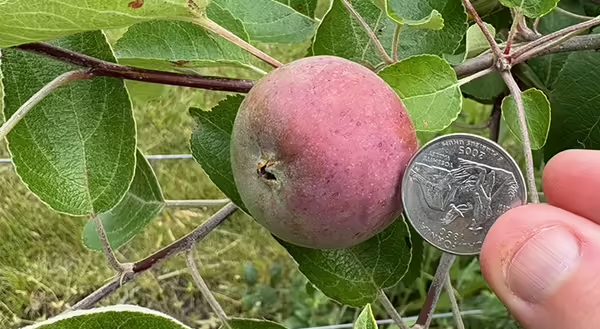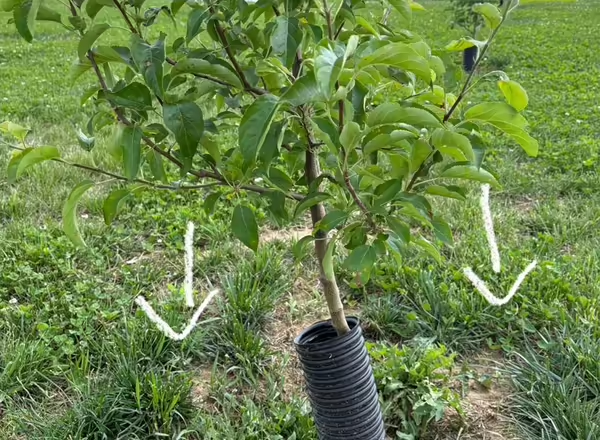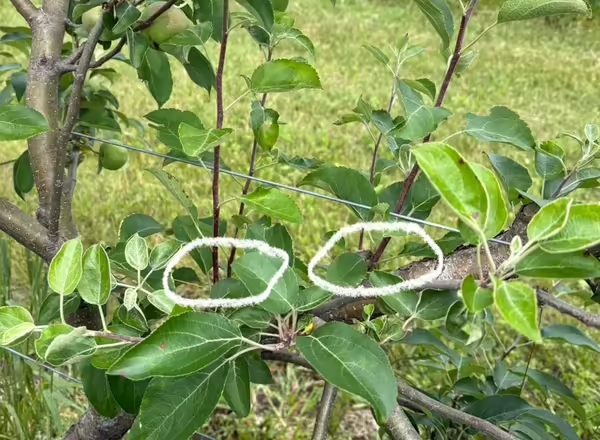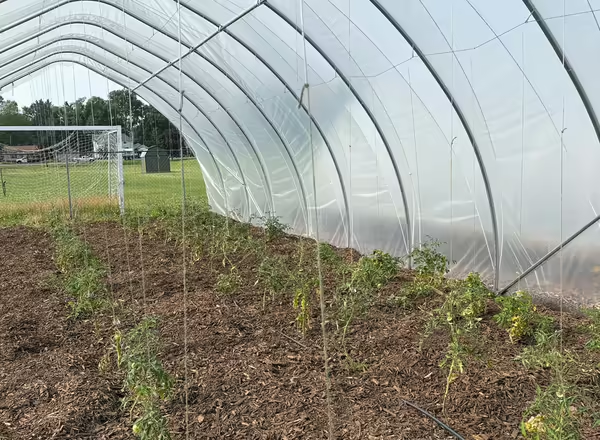
Weather
June began with much-needed rainfall, with most areas receiving 1-3 inches over three days. Temperatures remained consistent at the start of the month, ranging from 70-80°F during the day and dropping to the 50s at night, accompanied by periodic showers and storms across the region. However, conditions changed dramatically during the weekend of June 20th, when temperatures soared well into the 90s across much of our area. This sudden temperature spike has caused cool season crops to bolt, cutting short what would normally be a reliable growing period. The excessive heat may also affect flower development on cucurbits and delay ripening of fruits such as tart cherries and strawberries. We're hopeful that temperatures will moderate to normal summer ranges during the final week of June. As with May, additional rainfall would be beneficial for continued crop development.
Tree Fruits
Tart cherry harvest will begin at some Rockford area orchards during the weekend of June 27-28. While not all orchards grow tart cherries, they remain a valuable addition to u-pick operations. As noted in last month's newsletter, cherry leaf spot management in the summer of 2025 remains crucial for 2026’s fruit development.
Apple fruit development looks excellent this season. Fruit is about 25-30 mm with early varieties like ‘Zestar’ at 35-40 mm (pictured here, photo credit: G. McCarty, Illinois Extension 2025). Fruit size varies slightly from orchard to orchard, but the early ones, like ‘Zestar’, are the biggest compared to later-season varieties. Some orchards are encountering biennial production in some varieties, though not widespread. During recent visits to two younger orchards growing diverse varieties in different systems for different markets, I observed that summer remains a critical time for training young trees and establishing proper shape for optimal fruit development. With abundant sunlight this season, it's essential to identify shaded areas and work on bending limbs to improve light penetration for spur development. Especially during June.
If your trees have proper structure but still experience shading issues, consider summer pruning. This practice offers several horticultural benefits when performed correctly. Unlike dormant pruning, which stimulates vigorous regrowth, summer pruning helps control overly vigorous trees by reducing photosynthesis and limiting energy storage. This technique effectively manages upright water sprouts and shading shoots, which are non-productive and divert resources from fruit development. By thinning excessive foliage, summer pruning improves light penetration within the canopy, enhancing fruit color, sugar accumulation, and flower bud development for the following season. It's particularly useful for guiding central leader structure and promoting ideal branch angles in young trees.
However, avoid over-pruning, as excessive leaf removal can expose fruit and bark to sunburn. Trees that are drought-stressed or naturally weak should not be summer pruned, as this can further reduce their vitality. Maintain tool sanitation throughout the process to prevent disease transmission. When used thoughtfully, summer pruning is a precise technique that can enhance fruit quality and manage tree structure effectively.



Freeport Research Program
Our high tunnel research at Freeport High School has accelerated over the past month. This study evaluates tomato and cucumber production under covered conditions, testing various varieties for growers. While we experienced a setback with cucumbers that required replanting, the tomatoes have thrived and are showing excellent early-season fruit development—exactly the results we hoped to achieve. Data collection during this month has focused on overall plant growth, insect pressure, disease, and other observations.
Strawberry Season
June marks the start of strawberry season in Northern Illinois, typically lasting 2-3 weeks depending on varieties and weather conditions. Most farms were open for u-pick by the second week of June, which was a week later for some compared to the 2024 season. Insufficient rainfall in May has shortened the season for non-irrigated operations, while excessive heat during one of the final u-pick weekends (June 21-22) created additional challenges for some growers, affecting both picking conditions and future fruit development for the final days of the season. Despite these weather-related issues, fruit quality has remained exceptional.